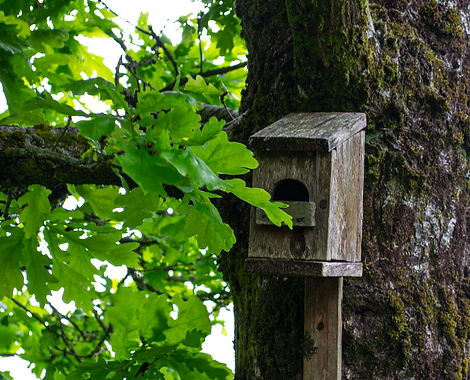top of page

Holland Park - Trees
Holland Park: Trees
As you pass through Holland Park, take a look at the diverse trees that create the loose canopy. Ash, oak, birch, beech, cherries, sycamores and some alder in the schoolyard, can you identify them all?
Oak trees, for example, with their gnarled bark and feather-like lobed leaves, are the kings of biodiversity. They can live for hundreds of years and support over 2300 different species across the various regions where they grow, including mammals, birds, invertebrates, plants, fungi and lichens.
Birch is another native deciduous tree, and there are two types in Ireland, the downy birch, with its soft furry hairs on the leaf stem, and silver birch, with its bright papery bark. Both species are important for wildlife, their leaves and sap attract insects, and the seeds are a source of food for birds (some of which also go for an insect or two).


Beeches and sycamores, though naturalised here hundreds of years ago, sometimes fall under scrutiny and are at times even considered invasive, as they are non-natives that grow vigorously, blocking out light in the understory hindering the growth of species beneath them. Despite this, both trees still provide food and homes for aphids, fungi, lichens, birds and bats and can become dramatic features of both rural and urban landscapes. Did you see the line of dramatic beech trees on the road to the castle nearby? They cast an impressive shadow, and only serve to illustrate this point further.
Fun fact: “Dair” in Irish, the oak tree was a prominent part of many Celtic cultures and can be found in Ireland in place names like Derry (Doire - oak grove), Kildare (Cill Dara - church of the oak) and Durrow (Darú, from dair magh - oak plain).
bottom of page
